- Tarwyn Park Training: The Home of Natural Sequence Farming
- Posts
- Reading Landscapes Edition #17
Reading Landscapes Edition #17
Edition #17 of Reading Landscapes is out now!
Good morning, and welcome to the 17th edition of our monthly newsletter, Reading Landscapes.

Every section will be split with this divider
Here’s what we’ve got for you today:
Looking at leaky weirs to manage David’s hydrology
Old memories - looking at Golden Dodder
What we’ve been learning

🔎 Looking at the Landscape
Like us to discuss a photo of your landscape? Share it with us here.
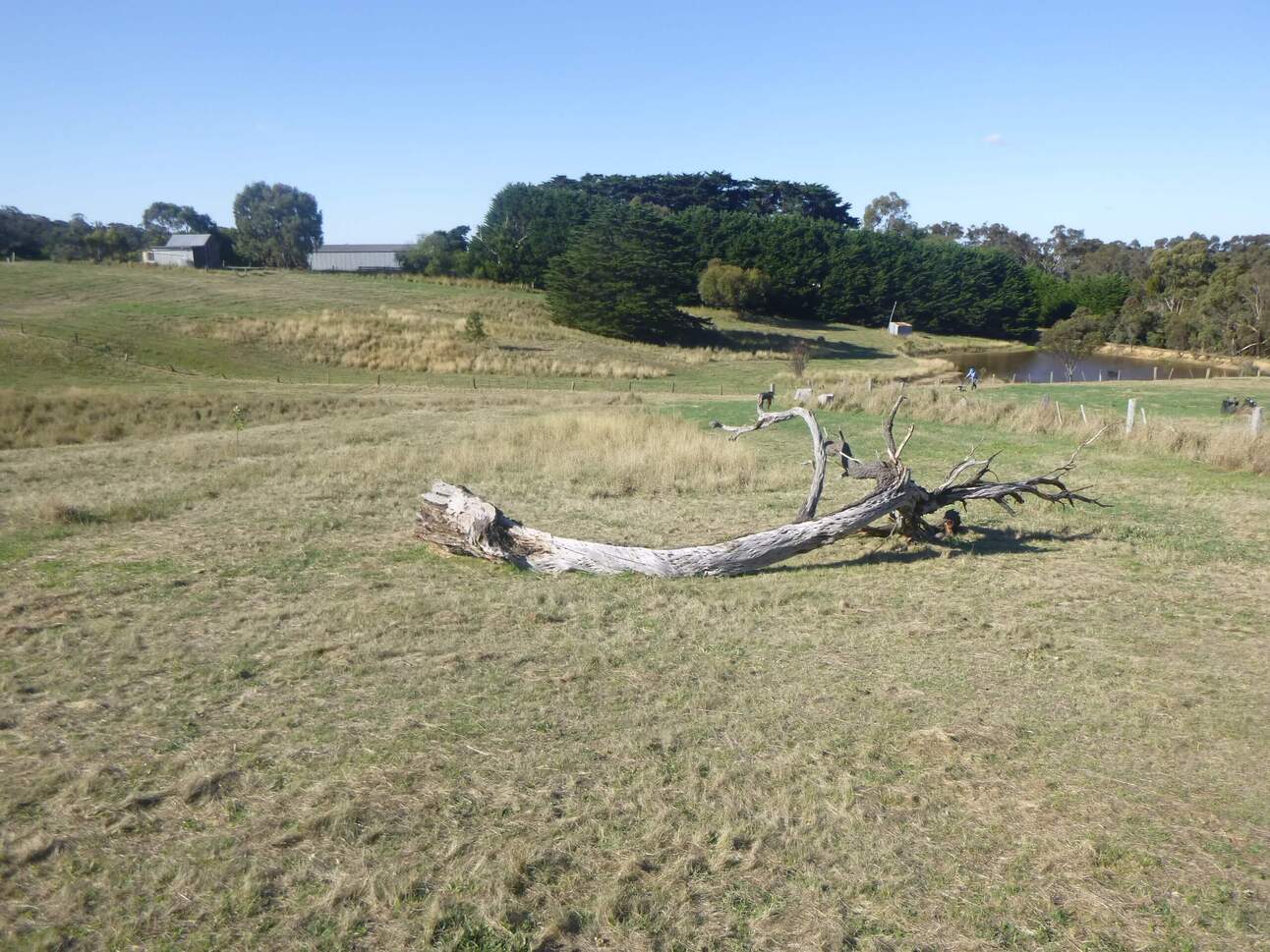
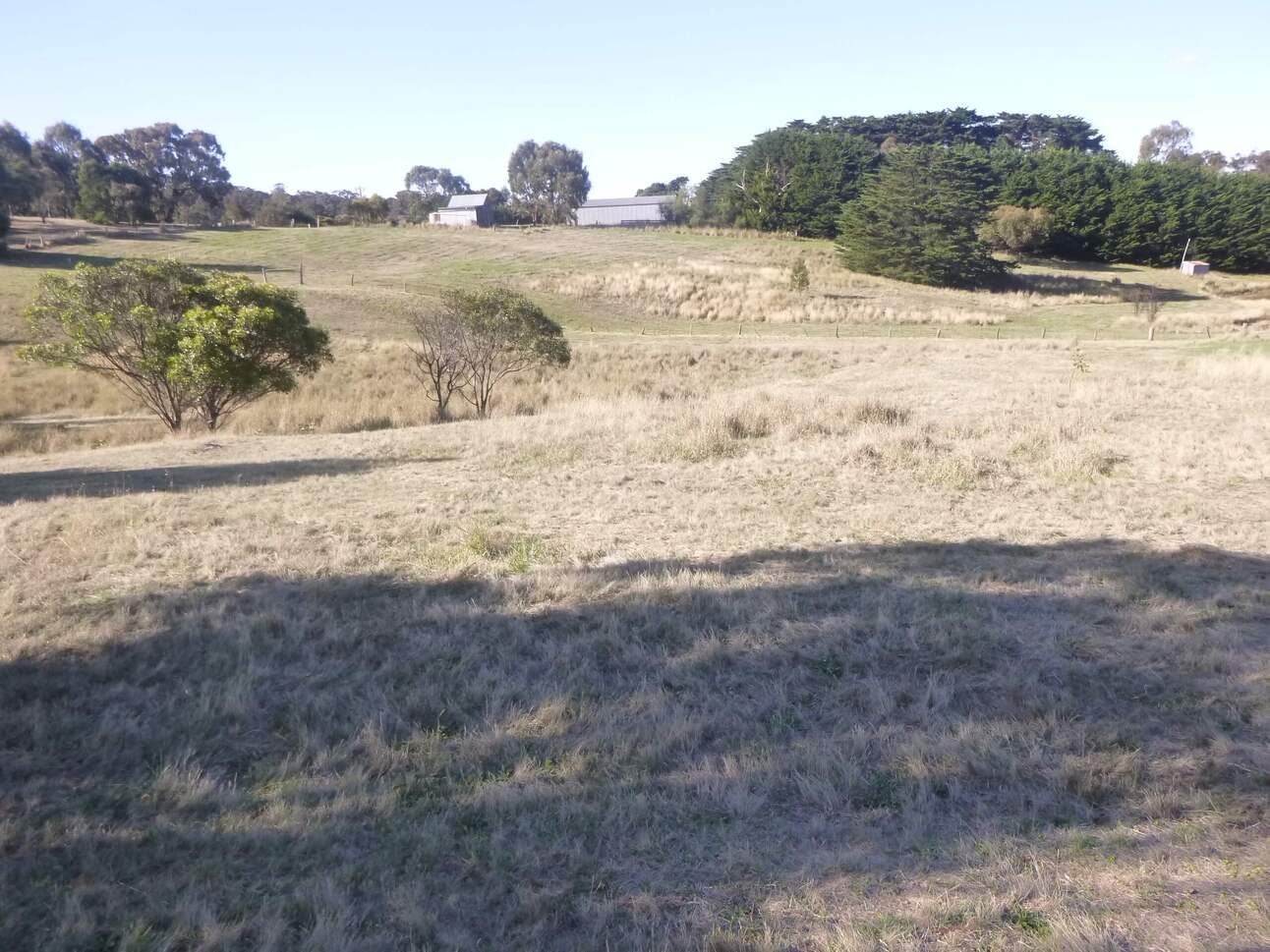
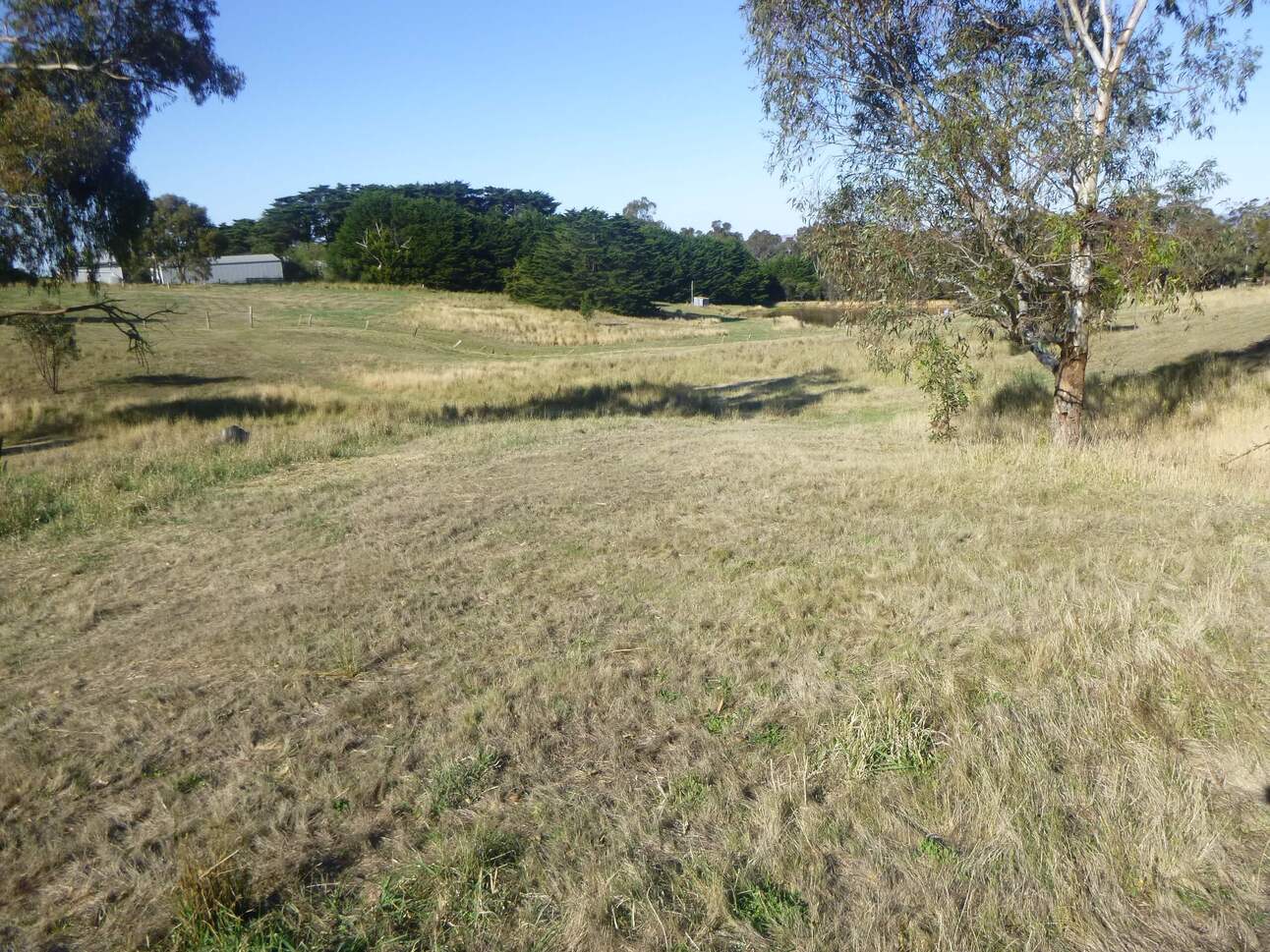
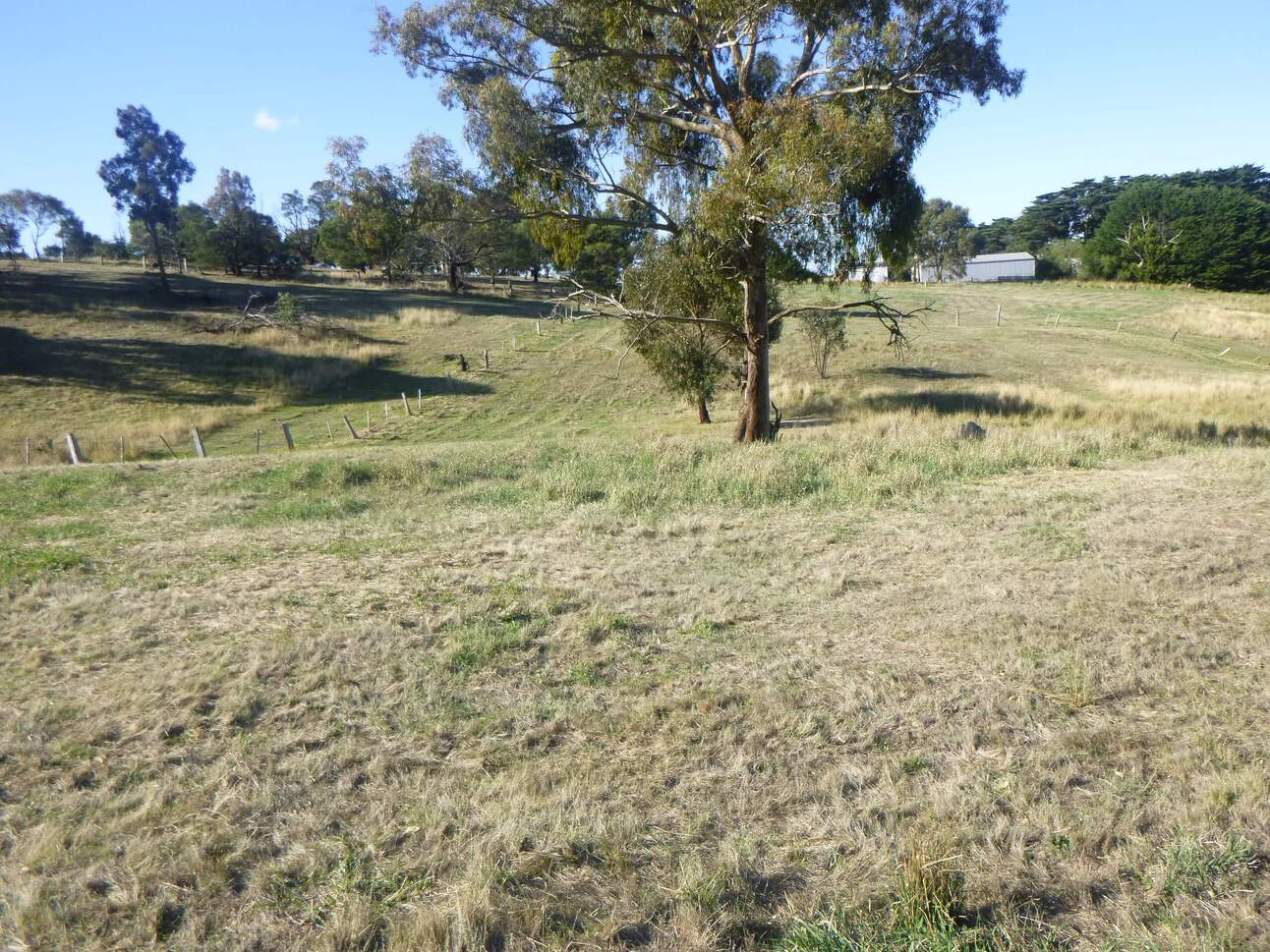
Thanks to David for sending in this month’s landscape that we’ll take a look at.
David has a gully running north to south across his property that appears on the Catchment Management Authority's flood database, despite showing no recent evidence of water flow. The gully features a dam at its base (visible on council watercourse mapping) and is notably the only area on his property with worms in the soil. Over the past two years, David has been revegetating the gully edges with native trees including River Red Gums and Snow Gums. He's seeking advice on whether installing leaky weirs across the gully would impact the local hydrology, and whether strategically planted tree rows could serve as natural leaky weirs instead.
First things first, I would always recommend reaching out to your local Catchment Management Authority (CMA) and checking with them about the status of that gully and what you are allowed to do at that specific site.
As to your question about using trees as a natural leaky weir, that is definitely an option. I would suggest to look at different species apart from Eucalypts they are fine for growing on the edges of wet areas and higher up in the landscape, but they are not suited to growing directly in wet areas like a gully - for that I would recommend something like a Poplar or a Weeping Willow again checking with your CMA about their stance on particular species.
Unless you’re completely set on trees, for managing water as well as fertility and nutrients in areas like your gully, grass species are even better. If you can get reeds growing in these areas, they will do an even better job and impacting your local hydrology than the trees, but a part of getting that process started will be creating an environment that is wet enough, long enough to support them. To do that, you could look to add hay bales at the step in your gully as a way of slowing down the water and creating little ponds, and therefore an environment for the reeds to grow. And, of course, you could always plant both the trees and the reeds.
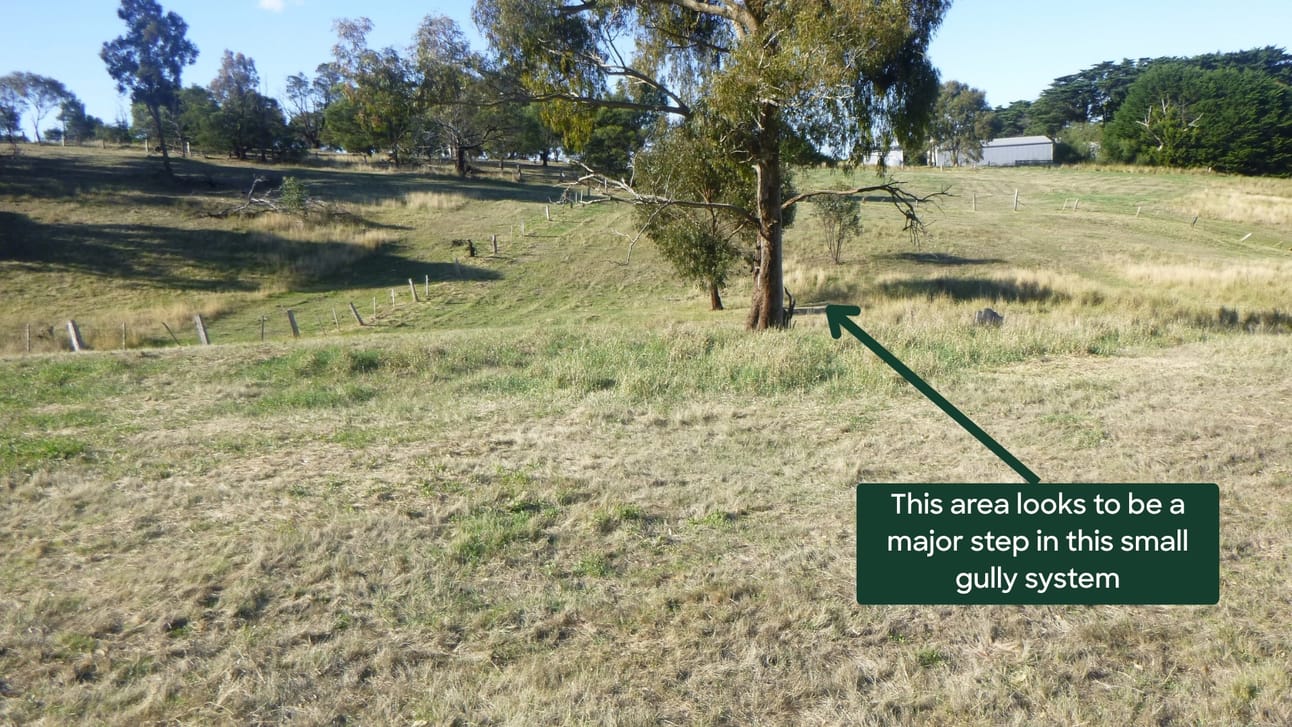
From looking at the photos of your landscape, the best place to start is around where that old gum is placed. From the photos around that location, it looks to be the top of your step and the best location to start managing water.
Some of the things I looked at to come to this conclusion are;
You can see in the area below that the landscape flattens quite a bit when compared to the land before that point
Additionally, in the area below the tree, there is a dense growth of plants, different from those growing in the landscape around. To me, the area looks like a natural wet area formed around a step in the landscape.
Longer term, you could look to build a contour at that step that connects with a larger area of the landscape. The contour could be taken out of the gully and across the landscape, allowing you to manage the water across a larger area and look to increase the productivity of your ridges.
These are just a few of the insights I can share from looking at this photo of course they could change when seeing the landscape in person as it is always trickier from a photo as well as once I know you context and what you want to achieve but these are just a few of my ideas from looking at the photos.
Thanks once again for sharing this, David, and I hope I’ve given you some ideas of what to do with the area going forward.

🌳 Learning from Plants
Have a plant you’d like to discuss? Share it with us here.
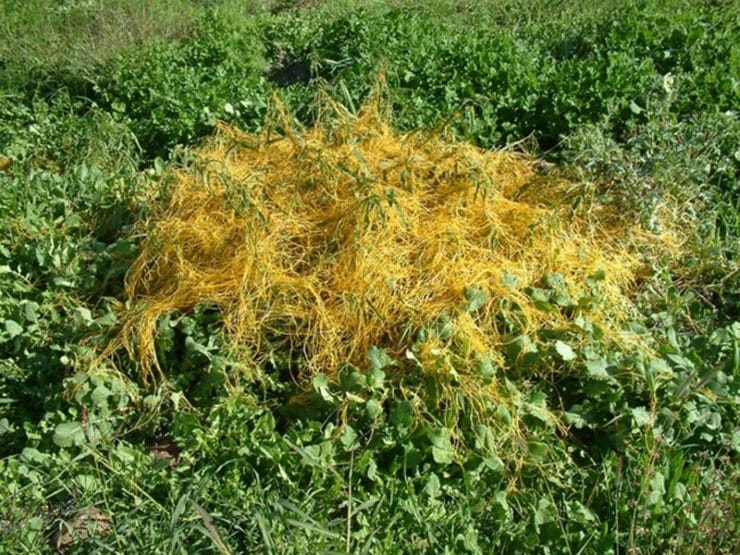
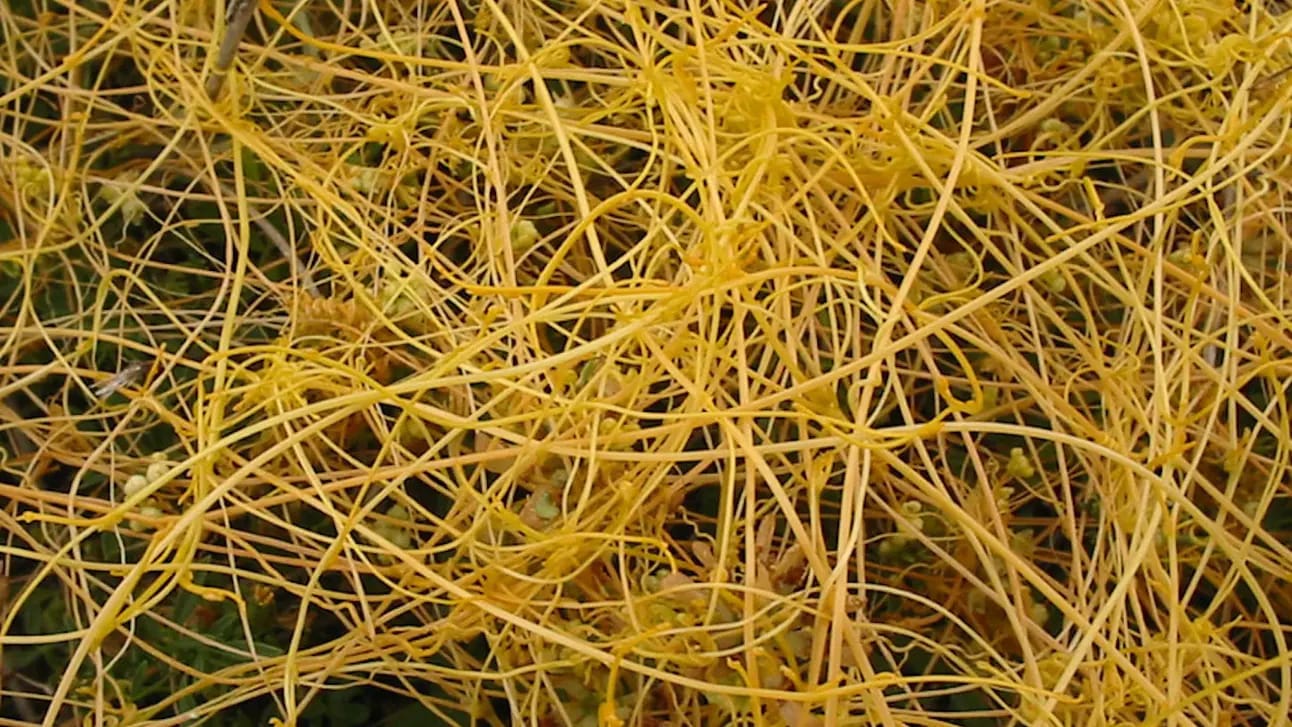
Golden Dodder
Common Names: Dodder, Field Dodder, Yellow Dodder, Prairie Dodder, Alfalfa Dodder, Angel’s Hair, Beggar Vine, Love Vine, Strangle Vine
Scientific Name: Cuscuta campestris
Where in the Succession: Late Succession Accumulator
Thanks to Matisse for sending in this month’s plant species, Golden Dodder. Interestingly, this plant holds a special place in my memory, but more on that later.
Golden Dodder is a summer-active annual parasitic plant. It is an interesting plant as it is thread-like in its growth patterns, lacking true leaves and roots, and has no chlorophyll. It grows as a mat over its host plant, which it penetrates and extracts its water and nutrient needs from - like the vampire of the plant world!
It is native to North America, but can now be found globally with a preference for temperate and subtropical climates. It reproduces via seed, and when germinating is reliant on quickly finding a host, as it is unable to survive independently.
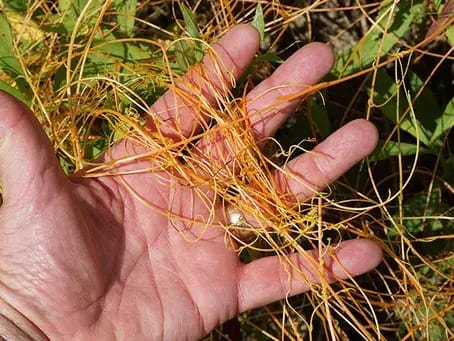
What is it telling me about my landscape?
Golden Dodder is a late succession accumulator species.
Where will I find Golden Dodder growing, and why is it growing there?
Golden Dodder is a fast-growing vine. Interestingly, it is known to have a preference for growing on herbs and not grasses, and in particular the daisy (Asteraceae) and legume (Fabaceae) plant families. In the case that Matisse shared, it is often found growing on Farmers Friend - a member of the daisy family.
The advantage of being a parasitic plant is that it doesn’t need specific conditions, just the right conditions for the plants it likes to prey on to be growing. The most common conditions it is found growing include the following;
Frequently disturbed landscapes
Pastures dominated by a specific species most often plants from the daisy or legume family
Degraded soils from excess cultivation or overgrazing
Degraded riparian areas
How can we manage Golden Dodder?
⬆️ Increase our organic matter levels. By increasing our organic matter levels and looking to have a good cover of material over the ground, it will help suppress the germination of Dodder and its ability to get away.
💚 Minimise our soil disturbance. By minimising disturbance and combined with increasing our organic matter levels, like we discussed above, we can limit the opportunities for Dodder to begin growing in the first place.
🚜 Use mechanical intervention. Dodder can be mown or slashed to take it out before seeding. The downside is the forage that will also be lost - to compensate for this, in landscapes that aren’t dominated by Dodder, you could selectively only cut the areas where it is actively growing.
🌿 Manage against monocultures - especially those in the daisy or legume family, which appear to be favourites for Dodder. I wonder… if the process that Dodder is undertaking is similar to what we are seeing in pasture dieback. In the instances of pasture dieback, it is often an area with a monoculture of grass, maybe Dodder is doing something similar, but instead of grass, herbs and its particular well-known favourites are lucerne and clover, two species often grown in monocultures or with limited diversity.
🌱 Promote the growth of more diversity. This ties in with the above if Dodder likes monocultures and simplicity, let’s take that away from it and manage in a way that promotes greater diversity and a healthier and more functional ecological system.
🏡 As I said at the start, this plant holds a place in my memory, and that’s because I remember growing up and watching Dad (Stuart) on his “regenerative” journey, and this was one plant that he was always looking to one-up. At our courses, everyone always has that one plant that they dislike, and in many ways, this was Dad’s. I have wondered since starting to write this newsletter whether it would pop up from the community, and well, here it is!
At Tarwyn Park it mostly grew over our Lucerne and Clover sometimes the Bathurst Burr and Nigoora Burr again showing its preference for daisy and legume families. Over the years, we managed it several ways through our grazing, with machines mowing or slashing it, and with organic products like pine oil applied directly on the plant.
In the end, our experience was that when we stopped focusing on it as the issue and just worked with the situation we were in and continued managing for what we wanted instead of what we didn’t, it became less of an issue and slowly faded away as the landscape changed. Now, was that a psychological thought or whether by stepping away, the Dodder was able to complete what it needed to and then move on in the greater succession - you decide.
How to make the most of your Golden Dodder
🪨 As a Soil Indicator: Low calcium, low phosphorus, as well as a potential imbalance in magnesium, sodium, or potassium levels. It could also indicate acidic soils.
🐮 Livestock: There is little evidence of its significance as a forage for livestock. It is noted that in large quantities (over 50% of the feed ration) and consumed over an extended period, it can be toxic for livestock. In my experience, livestock will consume it when growing over plants in a mixed pasture.
💊 Medicinal: The cuscuta family, including Golden Dodder, has a long history of use in traditional medicine, being used as a purgative, diaphoretic, diuretic, and tonic, as well as for poultices on slow-healing wounds. More recent experimentation has looked heavily into the potential antioxidant, antimicrobial, and anti-inflammatory properties of the family1.
One specific study investigated the ability of Golden Dodder to be used for leukemia patients. It was found that the plant could be used to start a process that caused certain cells to die in a controlled manner. The results deemed future research to be worthwhile2.
Not specifically medicine-related, but another interesting use case is how they are used as a research tool for creating a bridge between different plants for the transmission of diseases from one host to another3.
🍽️ Consumption: There are no records of Golden Dodder being consumed for human food, and there are cases of the potential toxic effects post ingestion, like in livestock.

How We Restored Eroded Slopes Using Natural Sequence Farming at "Marloo", Rylstone, NSW
“We purchased this property BECAUSE it was steep, clay, and badly degraded...” 🏔️
Stuart explains why we chose the most challenging site we could find for one of our Tarwyn Park Training home bases. Sometimes the biggest problems make the best teaching opportunities!
“Marloo” at Rystone has become our living classroom, demonstrating how Natural Sequence Farming can heal even the most degraded landscapes - and two watersheds simultaneously.
Want to learn these techniques on-site? Join us at Marloo this September! Early bird pricing is still available for a limited time

🧩 Trivia Time
Have a crack at this week’s question!
During Hurricane Irma, how much money did Florida’s mangrove forests save in storm damage by acting as a natural wetland barrier? |

Learn Natural Sequence Farming in 2025
Upcoming events open for enrolment
Learn Natural Sequence Farming 4-Day Course
Glen Alice NSW 8 - 11 September

📚 What We’ve Been Learning
A quick list of our favourite things we’ve been watching, reading, listening, and writing.
What Peter Andrews Wants Every Farmer To Know!: Tim Thompson recently visited PA for a tour around his farm and a discussion of Natural Sequence Farming. In this exclusive interview, discover practical techniques to restore water, fertility, and balance degraded soil - without chemicals or expensive infrastructure. Learn his "Rule of Threes" water management, how contours fix salinity, and why plants are key to rebuilding Australia's landscape naturally.
Why are we lying to young people about work?: This article challenges the myth that finding your passion makes work effortless. As a young person myself (part of the generation she's addressing), this resonated deeply. She argues that meaningful work will always be challenging, regardless of how much you love it. Even though I'm passionate about my work with Forage Farms and Tarwyn Park Training, there are plenty of days when I think, "This is bloody hard, why am I doing this?" But that's exactly the point. The difficulty isn't a sign I'm in the wrong place; it's the price of building something meaningful and the catalyst for growth. I'd highly recommend giving the full article a read.
Willie Pretorius post on LinkedIn: An interesting post on the difference between organic matter breakdown and carbon sequestration processes in the soil, as well as the importance of thinking about a diversity of plants when completing these roles, especially forbs or also known as “weeds” in some instances.
My 4-Stage System for Learning Anything New: I read this recent blog post by Tiago Forte, where he outlined a four-stage system that he follows for efficiently learning new things. Now, even though he’s an individual focused within the knowledge work space, I think these four stages are crucial to learn something new, no matter what field or interest you are looking into.
Sponge Cities: Reading Alpha Lo’s article On the nature of water and its stewardship I was intrigued by the concept of sponge cities being implemented across China as a natural way of better managing water in our “concrete jungles” during rain events. While this is not a one-stop solution, it is definitely a step in the right direction for how we should be looking to manage water in our cities and urban areas.

That’s all for this edition. Thanks for stopping by.
❓ Looking to learn more? Check out our blog
⛰️ Take the next steps to restore your landscape with our on-ground Learn Natural Sequence Farming course, or add your name to the waitlist for our upcoming online course.
👋 New to Reading Landscapes? Subscribe or read our previous editions
Before you go…What’d you think of today’s email?Rate today's edition to help make future ones even better |
3 Factsheet - Cuscuta campestris (Golden Dodder)
4 Valuing the Flood Risk Reduction Benefits of Florida’s Mangroves

Reply